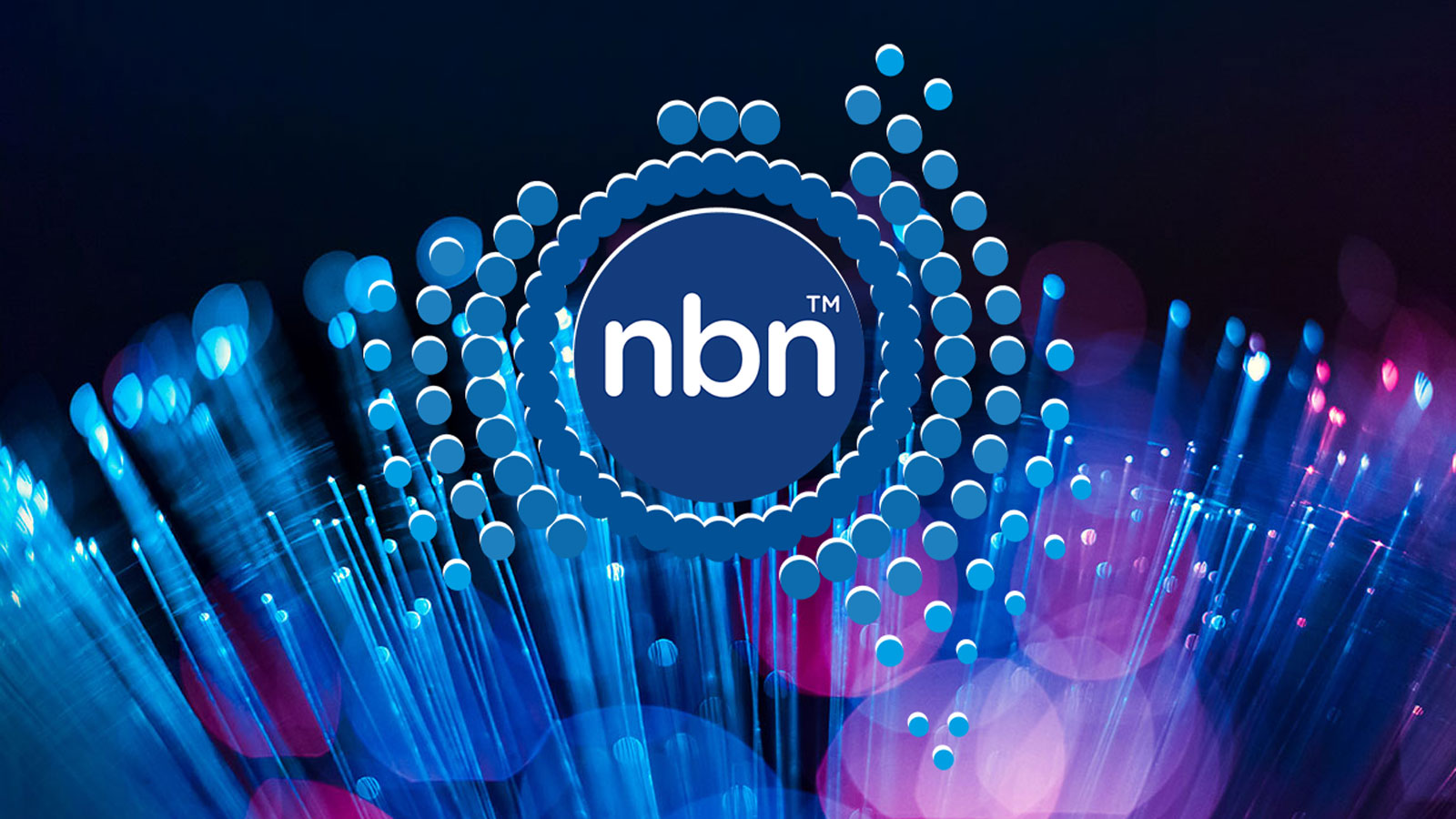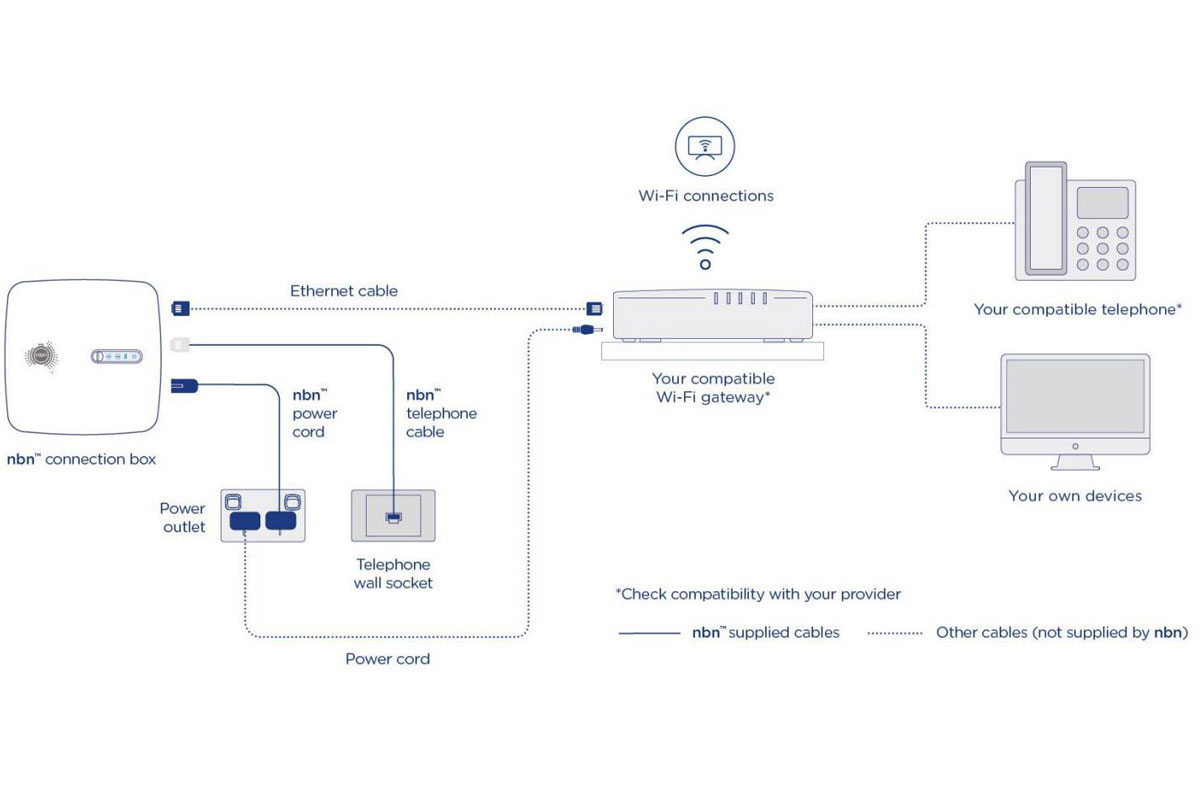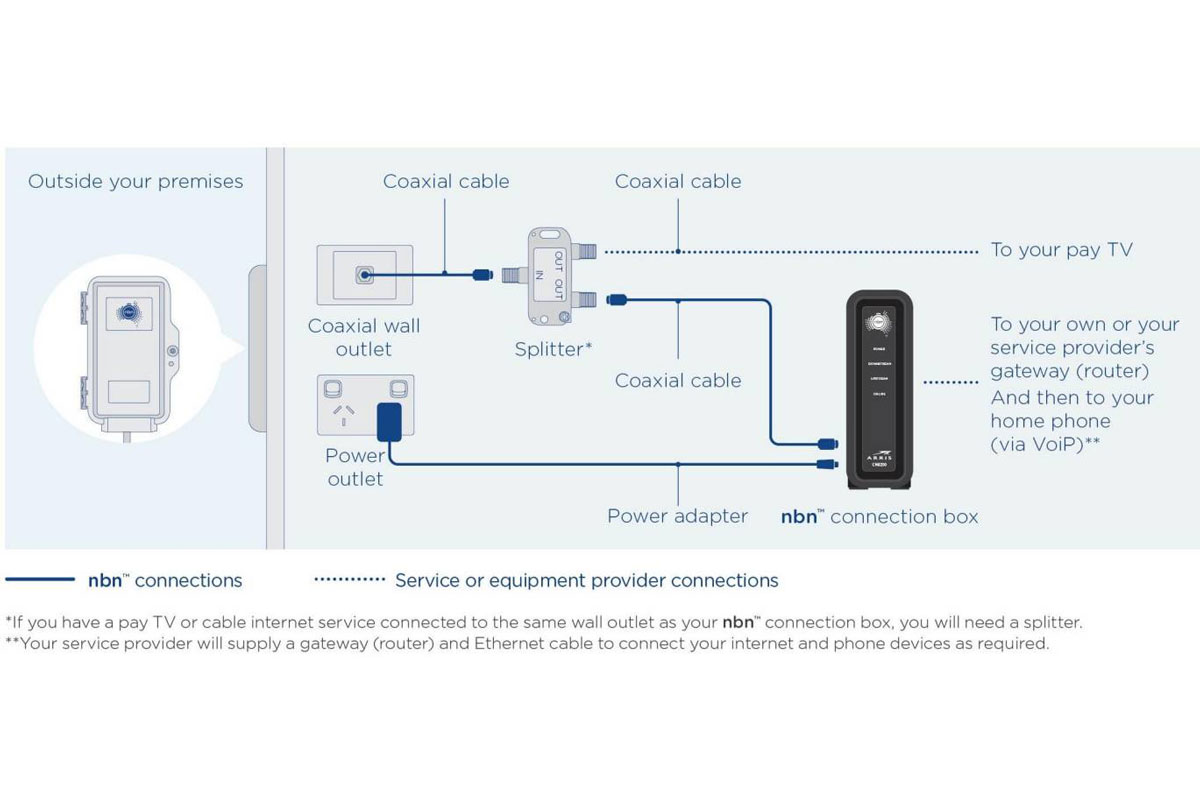NBN connection types: what do I have and which is best?
Your complete guide to understanding the NBN technology used in Australia.

Figuring out the differences between NBN connection types can be tough, especially if you're starting at ground level.
The National Broadband Network (NBN) claims that 12 million Australian homes can currently connect to the internet via its infrastructure, but it's important to note that not everyone connects in the same way. The internet plans available to you may be different to those of your friends and family, based purely on the NBN connection type available at your premises.
The connection type at your property will dictate what NBN speeds you're capable of achieving, especially if you have a fixed-wireless connection as opposed to fixed-line.
And, while you may assume that faster is better, if you're living by yourself, then one of the more common NBN connections may be perfectly suitable and will be more affordable when comparing NBN plans.
There are five fixed-line NBN connection types, which we talk about in detail below. If you're unsure which connection is available at your property – or a property you're looking at moving to – then you can find out on the NBN's website, simply by entering your address. Alternatively, your current internet service provider (ISP) will be able to help you.

As you can see in the graphic above, the vast majority of active NBN services are connected via fibre-to-the-premises (FTTP), which is capable of delivering the fastest speeds available of up to 2Gbps. Hybrid fibre coaxial (HFC) accounts for just under 2 million connections, and fibre-to-the-node (FTTP) is the second most popular with 2.4 million connections.
Customers currently connected via FTTN or fibre-to-the-curb (FTTC) may be — or may soon be — eligible for an NBN upgrade to the faster FTTP.
So, what are the NBN connections and which is best? Read on to find out.
FTTB

Fibre-to-the-building (FTTB) is found in apartment blocks and similar multi-unit buildings. With this connection type, a fibre-optic line is run from an NBN point of interconnect (POI) to the main distribution node in the building’s communications room (usually found at ground level or in a basement).
From here, existing cable technology (usually copper wiring) runs from the node to each individual apartment or unit. The customer then plugs a modem and/or router into an outlet on the wall to transmit a Wi-Fi signal.
Because the length of copper cabling to each apartment from the main building's distribution node is relatively short (especially when compared to FTTN and FTTC connections), users on FTTB connections will usually experience fast speeds. While the maximum download speed will vary depending on what NBN plan you have, FTTB connections are capable of supporting up to 100Mbps, meaning an NBN 100 plan is going to be an option for you.
While most apartment buildings will be connected via a fixed-line to the NBN using an FTTB connection, some residents of apartments may find a 5G home internet plan to be a good alternative to the NBN. This is because 5G speeds (if you're living in an area with good network coverage) can be much faster than the 100Mbps maximum of FTTB connections.
FTTN
Fibre-to-the-node (FTTN) and fibre-to-the-curb (FTTC) are similar in their use of technology, however, FTTN is generally the slower of the two connections. But, because it is easier to roll out and install, it is the most common connection type currently used in Australia. FTTN connections can still theoretically reach 100Mbps, but several factors can influence the actual speed you can achieve.
FTTN connections are similar to FTTB (image above), as it requires the NBN to run fibre optic cable to a distribution point that services either your neighbourhood or street and copper cable then runs to individual homes to deliver an internet connection. The use of copper cabling is what puts a limit on the top download speed, and the distance of your property from the distribution node also plays a deciding factor in the real-world speeds you can achieve.
FTTN connections have been earmarked to be upgraded to FTTP connections and the NBN has said that by the end of 2025 "up to 10 million premises," will be able to access hyperfast speeds of up to 2Gbps, which is possible on FTTP connections. Note, however, that the figure of 10 million premises already includes those already connected via FTTP.
The NBN selects certain suburbs to be upgraded, so if you are on FTTN, you're not guaranteed an upgrade anytime soon. You can find out more about NBN upgrades and see which suburbs have been chosen to be upgraded so far in our complete guide.
FTTC

FTTC is similar to FTTN in that it sees fibre optic cables being run to a distribution point, which then connects to your home via copper cable. However, the distribution point will only serve your street, and not an entire neighbourhood.
FTTC connections also only max out at 100Mbps, but there is a greater chance of you being able to achieve the full speed of whichever NBN plan you're on, because the distribution point is both closer to your home and will service fewer households. The typical evening speed you do achieve will still be dependent on your NBN provider, as not all quote the maximum speed of the NBN speed tier you're on.
FTTP

Fibre-to-the-premises (FTTP) is the top-tier of all fixed-line NBN connections, offering the fastest NBN speeds. FTTP is exactly what it sounds like, a fibre optic cable is run directly to your home, giving you your own personal fibre connection.
Because fibre optic cable is capable of handling much faster speeds and services just your home, FTTP connections are theoretically capable of 2,000Mbps speeds. We’ve yet to see multi-gigabit speeds actually achieved by FTTP connections — the fastest NBN plans currently available claim around 900Mbps typical evening speeds — but the technology is still capable of supporting it.
As previously mentioned, the NBN has said it plans to upgrade homes to FTTP connections. In some cases, you are able to request an upgrade to FTTP if you currently have an FTTN or FTTC connection, and if you live in an eligible area. This is currently only limited to individual premises and only in certain circumstances, but note that you will have to cover the cost yourself, which can stretch into the tens of thousands. More information can be found on the NBN website.
HFC

Hybrid fibre coaxial (HFC) connections are also theoretically capable of achieving superfast and ultrafast speeds. They utilise an NBN-installed fibre optic cable and previous coaxial cabling at your premises that has previously provided cable TV services, such as Foxtel.
Telstra and Optus, two of Australia’s largest telcos, have provided internet via coaxial for many years. The NBN bought this infrastructure off of the two companies and repurposed it.
In an HFC connection, an NBN fibre optic cable connects to a point of interconnect (POI) installed outside your home. This feeds into a coaxial wall outlet inside your home. From here, you connect a coaxial cable to an NBN connection box, which you then connect to a Wi-Fi router to deliver internet throughout your home.
While HFC connections are capable of supporting the fastest NBN 1000 speeds, because they do technically use older cabling (in the coaxial) they might not always be as fast as FTTP connections, which rely on solely fibre optic cable.
But upgrades are also being made to HFC connections, which should see them become more stable and allow them to consistently deliver ultrafast speeds.
What if I can't get fixed-line NBN?
Why you can trust Tom's Guide

If you don't live in an area that is served by a fixed-line NBN connection — commonly, regional and rural areas of Australia — then you should be able to access the NBN's fixed-wireless service to connect to the internet.
Fixed-wireless connection speeds are much harder to determine because of the limitations of the equipment, and the provider you go with can also influence the real-world download speeds you achieve. It's because of these factors that providers of fixed-wireless services don't have to report a typical evening speed.
Even if you're meant to be on the fastest NBN 75 fixed-wireless plan, for example, you might not actually achieve this, especially during the busier evening hours.
The Australian Competition and Consumer Commission (ACCC) monitors the average performance of fixed-wireless NBN services. In its latest Measuring Broadband Performance report, published in September 2025, it found that average download performance across NBN 25 and Fixed Wireless Plus plans was 89.7% during all hours, and 84.0% during the busy hours of 7pm – 11pm.
This means that for people who do require a fixed-wireless NBN connection, you should experience the speeds associated with whichever plan you're on.
NBN connection type FAQ
How do I check my NBN connection type?
To check your NBN connection type, you can visit the NBN Co's website and type in your address. You'll be told what NBN connection type is available at your property and if you're on a slower connection type, such as FTTN, you'll be given tips to optimise your connection to get the most out of it.
What is the best NBN connection type?
The best NBN connection type is fibre-to-the-premises (FTTP). An FTTP connection sees a fibre optic cable being run from the NBN point of interconnect (POI) directly to your property. An FTTP connection can support the fastest download speeds, which currently max out at 2Gbps.
However, not all premises in Australia will have this connection, and it is most likely to be found at new-build properties.
Get instant access to breaking news, the hottest reviews, great deals and helpful tips.

Lucy Scotting is a digital content writer for Tom’s Guide in Australia, primarily covering NBN and internet-related news. Lucy started her career writing for HR and staffing industry publications, with articles covering emerging tech, business and finance. In her spare time, Lucy can be found watching sci-fi movies, working on her dystopian fiction novel or hanging out with her dog, Fletcher.
